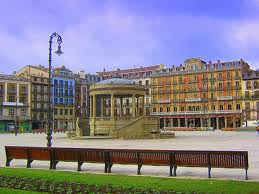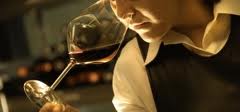Museums in Pamplona
Located on the foot of the Pyrenees, Pamplona inconspicuously blends with the unremarkable landscape on the one end, while on the other it rises prominently over the rolling hills and the overlapping creeks, boasting its millenary walls that have protected her from potential attacks through several levels of mural defenses. That, already, displays the temperament of a complex city that offers locals and visitors alike multiple layers to discover and enjoy.

Famously depicted by Ernest Hemingway in his all-time classic, The Sun Also Rises, once every year Pamplona becomes the hub of an unusual activity and the centre of the world’s attention as locals celebrate the feast of St Fermín, the patron saint of Navarra, by setting raging bulls loose on the narrow roads of the historic centre, which are swarming with enthusiasts who run alongside the bulls, prompting them, fighting them and, sometimes, even suffering the agonising pain of their piercing horns catching them.
Other than that desperate week of unrestrained madness, Pamplona is normally a quiet and secluded place, ideal for a relaxed holiday, a spell of ideal thought or any activity involving substantial levels of concentration. For that very reason, it is very common to find people coming to study Spanish in Pamplona in one of the many schools, because this is the perfect place to carry out your learning and to put the theory in practice within a friendly environment.

During your stay in Pamplona one thing that is certain to exceed expectations is the quality and variety of the local cuisine and the gastronomic tastes of the region. For instance, wine from Navarre is nowhere near as famous or as reputable as Spanish wine from La Rioja, for instance, and yet, the hills and slopes of the Navarrese countryside are all covered in vines and vineyards, accounting for a sophisticated and highly developed industry. Particularly abundant in the production of rosé and red wine, the upshot of the global anonymity enjoyed by Navarrese wines is that you can get a splendid bottle for far less than Rioja wine.
In terms of Spanish food, Pamplona is famous throughout the country for the quality of its chistorra, a highly spiced pork sausage with relatively high levels of fat, designed to be cooked (grilled or fried) and to be had warm, typically as one of several tapas. Similarly, sheep's cheese, a common dish all over the peninsula, is highly reputed in Navarra, especially the hard modality produced on the Roncal valley. Sit in any bodegón of the city to ear chistorras and sheep's cheese with a glass of red wine from Navarre and you will wonder why you had never been to Pamplona before!
But Pamplona is more than occasional madness and earthly delights: a city steeped in ancient history, Pamplona is, as a matter of fact, the end product of the unification of three previous settlements, which until the 15th century were distinctly separated by their own walls and which often embarked on violent conflicts, despite their proximity. The original settlers of Pamplona are likely to have been Vascons, who named the city Iruña. Upon the Roman annexation of the Hispanic territories, Iruña was renamed Pompaelo, as a tribute to the great Roman General and conqueror of Iruña, Pompeius Magnus.

Pompaelo remained small and provincial until the emergence of Navarre as a powerful Christian kingdom, under the reign of Sancho Garcés III, round about the turn of the 11th century, roughly at the same time as the Caliphate of Cordoba entered its decline with the death of Almanzor. Pamplona, now the capital of the kingdom (known back then as Pamplona y Deyo, rather than Navarre) grew in size and burgs emerged in the near proximity of the castle. One of them, the Burg of Navarrería, corresponded roughly to the original settlement of Iruña, later Pompaelo.
But the competing burgs of St Cernín and St Nicholas gained in importance, with rival populations of francs and Vascons The long conflict finally came to an end with the reign of Charles III of Navarre, who proclaimed the three burgs as one united city, giving it special rights under the 'improvements' he imposed on the fueros de Navarra, the ancient compendium of laws of the kingdom, which stipulated the political and social rights of the civil population, and the extent to which the king's powers stretched.
These days, the passage of history through the city of Pamplona can be vividly experienced through visits to the two most outstanding museums: the Museo de Navarra, which gives a close mapping of the peoples that have inhabited the city and their particular traditions. Equally noteworthy id the Museo de la Catedral, which takes a close look at the role of the church in the history of the kingdom, and displays some of the most outstanding pieces of art and architecture present in the city.



